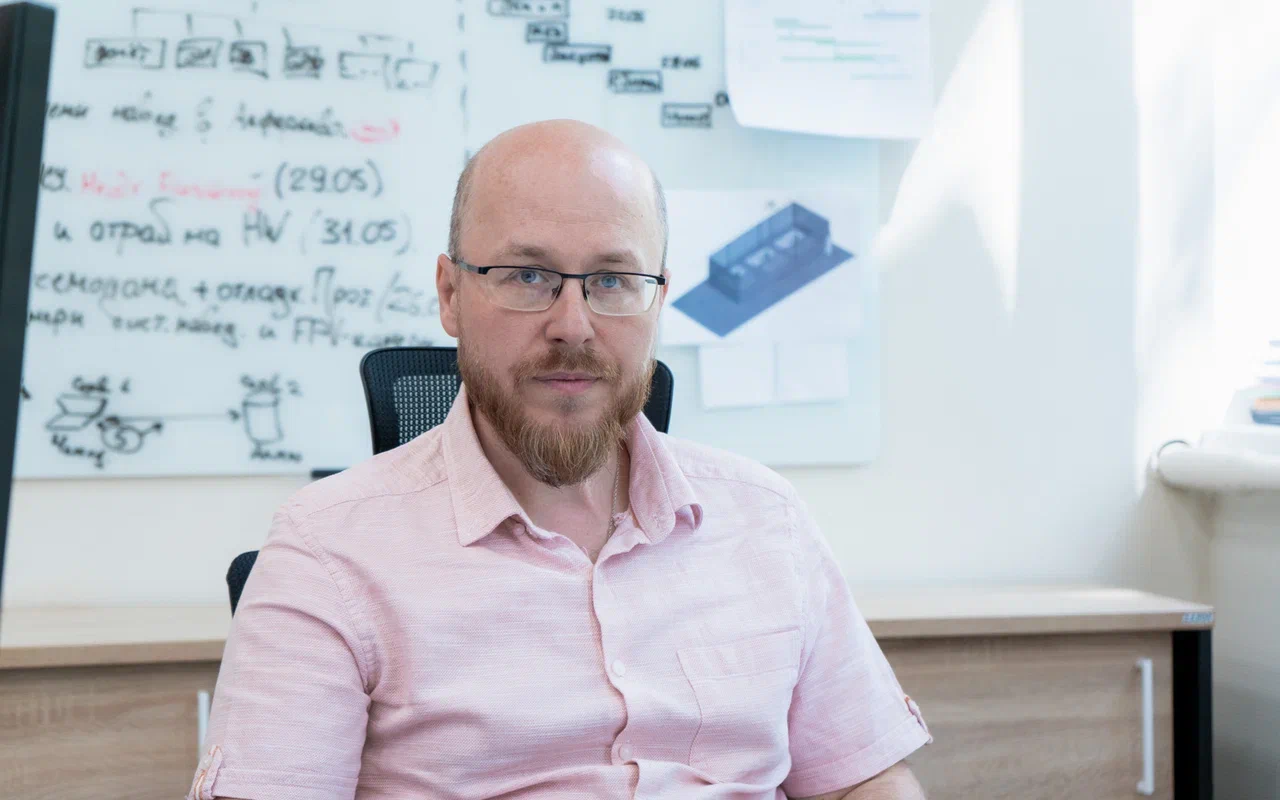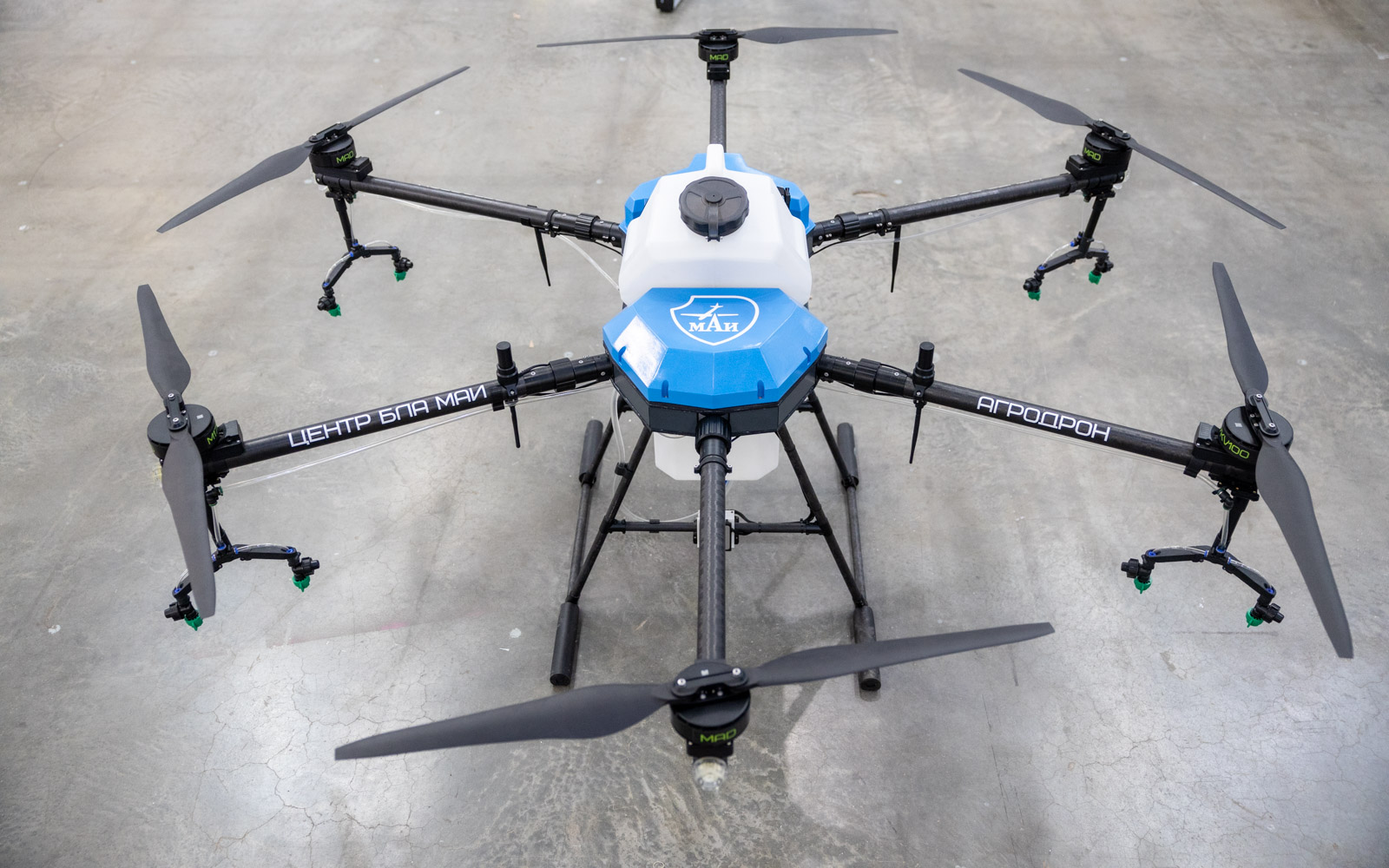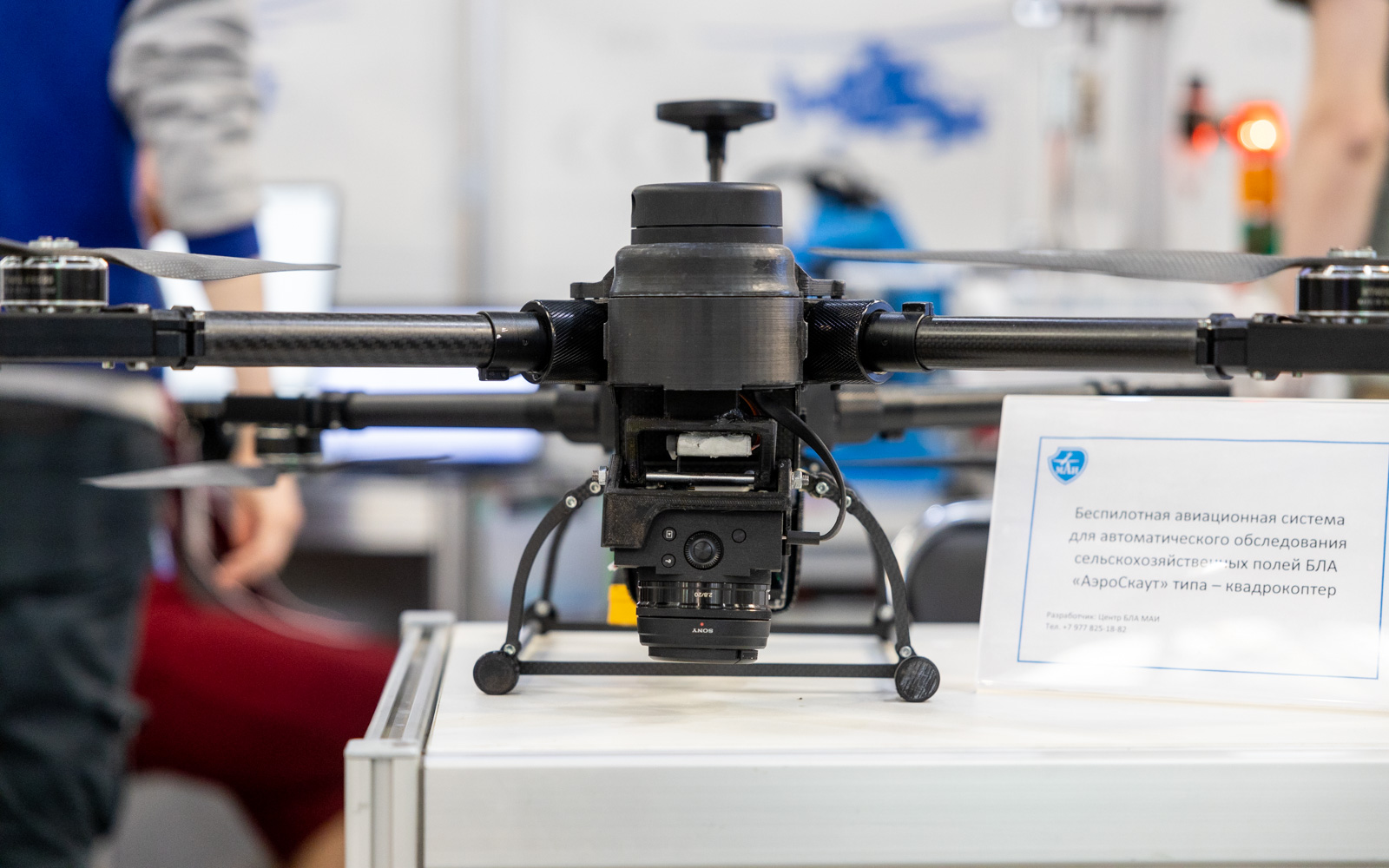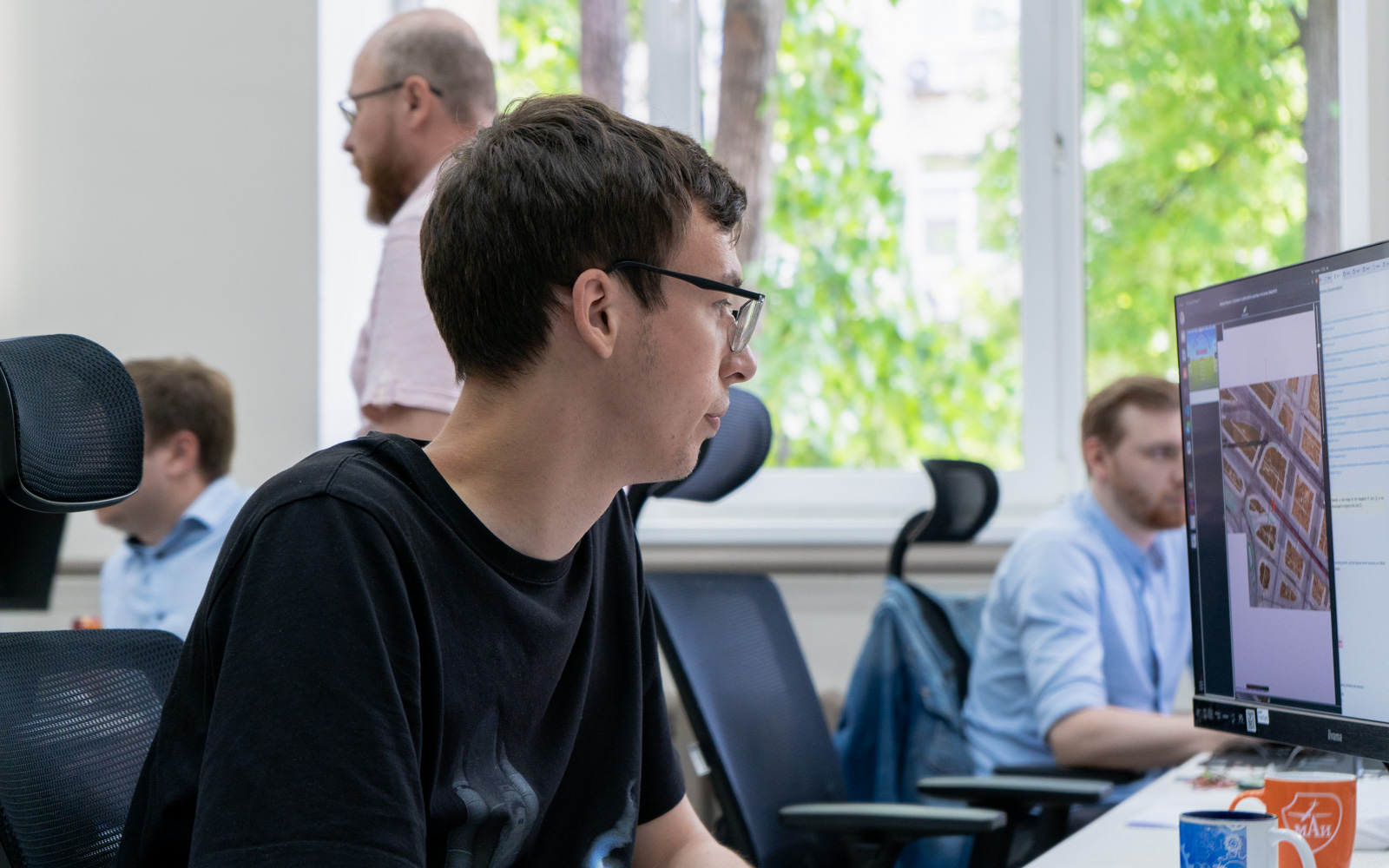From Agrodron to air taxi: director of the MAI UAV Center tells about the drones and the prospects of the industry

Moscow Aviation Institute is one of most active participants of the formation of a new market of unmanned aircraft systems. In accordance with the MAI development model, as part of the Priority 2030 program, the university is implementing the strategic project "Air Mobility" on the basis of the Center "Unmanned Aerial Vehicles". What kind of work is carried out in the division and how soon unmanned aircraft will transport people, Yury Bukharev, Director of the MAI UAV Center, tells us in this interview.
– Tell us about the center: how old is it? Who are your team? How many projects do you have?
The UAV Center has been operating for a little more than a year already. And I was appointed the head of it for about a year ago. During this time, we formed a team consisting of students whose interests include the development of unmanned aerial vehicles, as well as industry professionals. This results in a great interaction here: experienced experts are mentors for young employees.
To date, we are working on four projects, three of them are commercial.

– Please tell us about them.
The first is the Kontur complex, it consists of a drone with a takeoff weight of about 10 kg, special software with elements of artificial intelligence, a ground station and a landing pad. This is an unmanned aviation system designed to monitor the protected perimeter.
Imagine: you have a stationary camera, with its help a certain territory is monitored. And a drone, also equipped with a camera, moves around the perimeter, including areas that do not fall into the lens. But the main function is performed not by the drone itself, but by the software that processes the video streams received from it and the stationary camera, and automatically detects various violations. For example, there might be people in a prohibited area, improperly parked cars, fights and other illegal actions. This complex allows you to replace the routine work of security guards who are engaged in circumvention of the perimeter.
At the moment, we are carrying out development work to create a sample that will go further into serial production. Components are being purchased, then we will complete the assembly and deliver the first batch to the customer. We have completed the assessment work, testing of a flying prototype and a ground station where flight tasks are configured and information is displayed, evaluation of the automatic landing system.
Agrodron is the second project. Now in the agricultural sector, services such as the introduction of pesticides, herbicides for plant protection or pest control, fertilizers, baits in small areas are in demand. If earlier there were collective farms with extended fields and they were serviced by AN-2 aircraft, now the use of drones is relevant for farms with their small areas of fields. Such drones have a mass of up to 100 kg and can carry a payload of up to 30 kg. It is easy to bring them by car, launch several devices at once. This is the drone we developed. The first prototype is already assembled, and now we are ready to start testing it.

The third project is also agricultural, it is called Agro Scout. This is an aviation system for automatic inspection of agricultural fields: a drone equipped with a camera flies up to a certain area, descends to a height of 1 m and takes several photos. Upon completion of the flyby and shooting, it transmits information to the system, where special software using artificial intelligence processes it, analyzes the condition of crops, detects the presence of weeds, etc., gives its conclusion and recommendations. Now we are carrying out the final work on preparing the system for delivery to the customer.

Returning to the Kontur: you mentioned that the main feature and uniqueness of the device is its software. Who was involved in its development?
Kontur is the result of cooperation with the MAI IT Center. The experts of the center created software with elements of artificial intelligence, were engaged in the formation of a graphical interface, training a neural network to recognize individual scenarios, testing.
– Your center presented its developments at HeliRussia. What was the feedback?
All three projects that I talked about were presented at the exhibition. And all of them aroused the interest of visitors.
If we talk about the Kontur, then there is interest from non-profit structures, for example, the Ministry of Emergency Situations. Drones equipped with cameras, thermal imagers can be used to detect fires. And Kontur is suitable for these tasks: software for automatic detection of violations can be reconfigured to meet the needs of the customer.
There was a lot of interest in Agrodron from companies that provide field processing services. This year we plan to start a small series to provide farmers with our machines in the next season.
Agro Scout is a flying camera with a very high resolution matrix. And there is interest in this system from companies that provide monitoring services, as well as companies from the agricultural sector.
– Are you satisfied with the results of the exhibition?
Yes, of course. We not only demonstrated our developments, but also received good feedback on them. We saw that many companies are looking far ahead, are interested in technologies, including in the field of urban air mobility, air taxi. And we plan to develop not only this, but also other areas.
– Since we have touched upon the topic of plans for the future, tell us what kind of work is to be done in the next 5-10 years?
Now we are engaged in the development of drones that provide transportation of various payloads. But in the future, one of the main tasks of our center is to create an air taxi. This is a task, the solution of which will be indicative for us, because here we will work out not only the technical part, but also the certification processes.
We are not only developing UAVs, but also are engaged in confirming that this or that design is reliable. And the establishment of our center as a developer, a tester will be confirmed by the creation of such serious projects as air taxi. Well, a large layer is the area of certification: carrying out work and creating evidentiary documents confirming that the aircraft is reliable and safe.

– When, in your opinion, will air taxis fly in our cities?
I will be as conservative as possible in my assessment, since the transportation of people in an air taxi in automatic mode is a very risky thing. And despite the fact that there are already technologies that make it possible to create such devices, their maturity in terms of reliability requires time and careful evaluation.
Taking into account the fact that norms around the world are at the stage of formation, I think we will definitely live without it for the next 5 years. Today, technologies for the automatic flight of cargo drones are being worked out, a large number of sandbox experimental legal regimes have been created throughout Russia. And when this technology is debugged, the devices will be recognized as reliable, then it will be possible to move on to talking about the transportation of people.
– How will UAV in Russia develop?
The main vector of the industry's development in the near future is the creation of small vehicles that provide payload transportation from 300 g to a dozen kilograms. These devices of various types will definitely be in demand.
Talking about the long term, then, as I said, it will be the creation of serious vehicles for the transportation of passengers. And one of the main tasks that developers of unmanned vehicles and manufacturers of onboard equipment will need to solve is to find an alternative to imported devices that are part of these devices, or to learn how to produce them themselves in their own country. After all, the most important competencies in the development of UAVs lie in the creation not of the airframe, but of the the engine, radio electronics that ensures the operation of the UAV. And if you approach the process comprehensively and fully, then you need to create everything - starting from the body of the device and ending with its stuffing and software. This is our approach, which we adhere to at the UAV MAI Center.